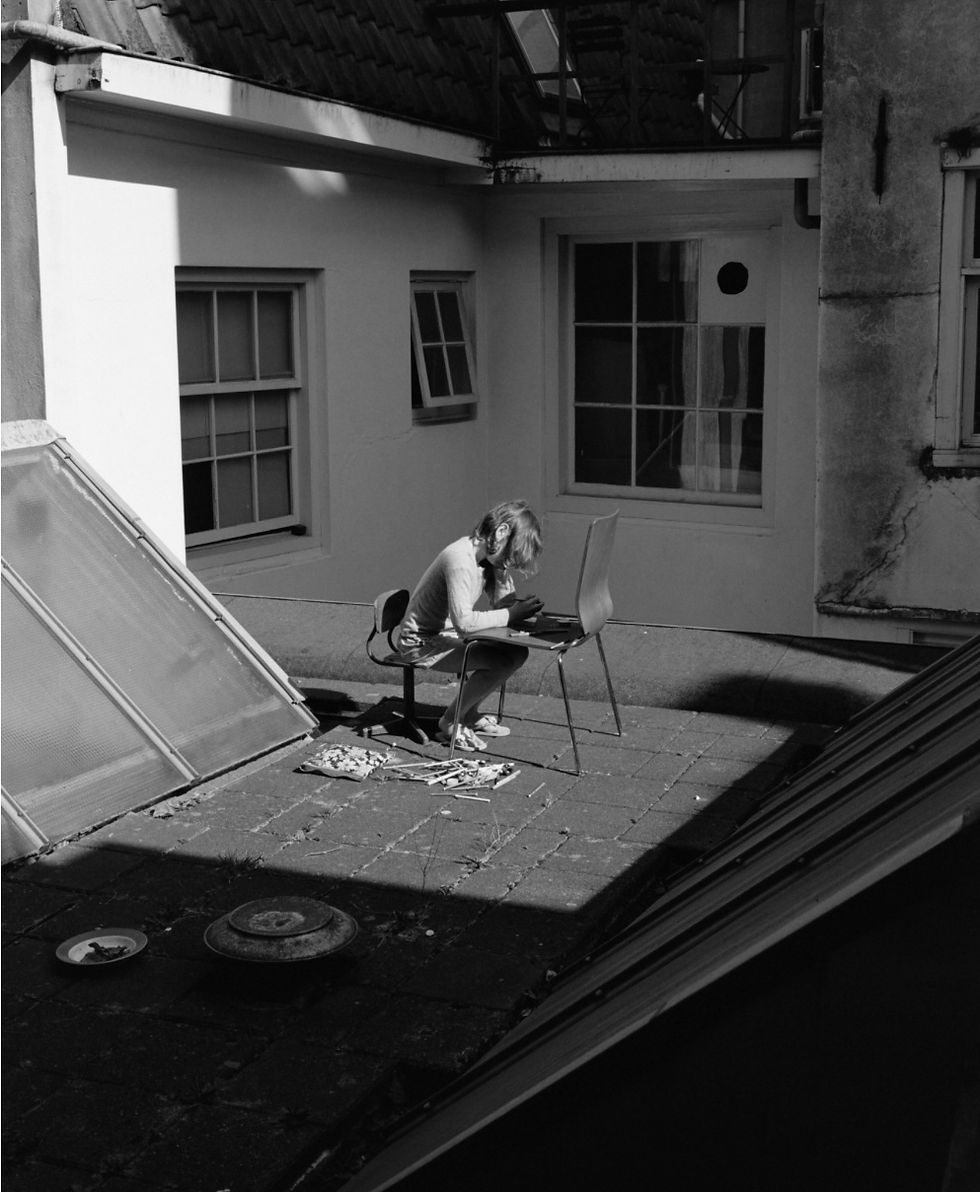Zillion by Thomas Manneke
- Robin Titchener
- May 30, 2024
- 3 min read

"Every picture has its shadows and it has some source of light
blindness, blindness and sight"
Joni Mitchell
I have been spending some time in the dark and beautiful world of Zillion, enjoying, appreciating, trying to understand and get beneath the skin of it. Its author Thomas Manneke has alluded to the fact that the images are a result of the relationship and interaction between himself and his daughter.
So I looked, and I looked and the word relationship continued to surface, to nudge its way into my thought process, because finally it seems that more than the connection between father and daughter, it is a book about relationships in general, both physical and metaphysical.
Parental, elemental, and luminous.

The joy of looking at photo books that contain no text or offer any lifeline to their audience means that ultimately the viewer will take what they will and interpret the work in a potentially infinite number of possibilities.
If there is no map, there can be no wrong turns.
If there is no melody then there is no song. Or, at least not in the conventional sense.
But rather like jazz musicians who may embark on their aural freefall with little more a start and end point or a Dadaist writer cutting up words and phrases then rearranging them to form poetry, then conventional rules do not apply here, and beauty and structure is fashioned as the journey progresses.
Zillion reveals its relationships in layers and fragments, u-turns and zig zags.
Hazy or unequivocal, all are plain to see, however what is seen first and what lingers will be different.
The portraits.
Some carefully posed, others seemingly catching the young sitter unawares, Manneke observes his daughter both from afar and in close up. As with much of Zillion we have the juxtaposition of the intimate and the impersonal. The child and the emerging siren.

Whether sat on one chair, hunched over another acting as an improvised table, intently working - no doubt crafting one of the elements later to be appropriated for this very book, the girl is a small frame, head down, her face obscured by her hair. She is framed by the sunlight that beams down almost ecclesiastically isolating her in the courtyard or possibly rooftop space in which we join her.

Knees and hands, buried in sand, the definition of childhood.

Dress up, earrings and a look that blends boredom,sensuality and pastiche.
Plenty of time for such discoveries. This is a time to revel in the ignorance of such affectations.
Plenty of time
And the silhouettes, anonymous and yet so luminous.
The child standing in a street.

An adolescent framed by a doorway.
and a pensive youth at a window.

The same person but different people.
As with another of my favorite photographers, Japan's Sakiko Nomura, Manneke proves that describing a person and conveying a sense of self is as much about removing light as it is the confidence of connection.
The elements.
A visual dialogue between parent and child which echoes the physical. In the crafting and sharing of small sculptural treasures, a father endeavours to understand his daughter and maybe vice versa. A shared delight in the inspiration of nature, the emulation of the real world manifests in the imagination of youth.
The objects bounce and converse with each other.

The handmade creations, egg boxes, nails and string, cutouts and mobiles, slalom between natural ones, steps and twigs, cobwebs and shadows, water and stone.
Dodging and swerving but never colliding.
Elusive control.

The dialogue is not obvious and the freedom to lose yourself is ultimately one of Zillion's greatest successes.
This is a book of dots and every time you open it , your pencil will connect each one differently with each visit.
No maps, no wrong turns.

Luminosity.
Then we have the element that really lingers with Zillion, Manneke's mastery of light.
This really is a dialogue of shadows and it is the understanding of how to utilise the medium that truly brings any message to life.
To photograph an object is to record it, to treat it with the understanding of a baroque painter, to imbue it with a sense of chiaroscuro, is to celebrate it, bring it to life and animate it. This is what makes it linger.

Zillion celebrates the incongruous and indefinable nature of relationships and the joy of walking a maze as night falls.
No maps, no wrong turns.
Luminous.






Comments